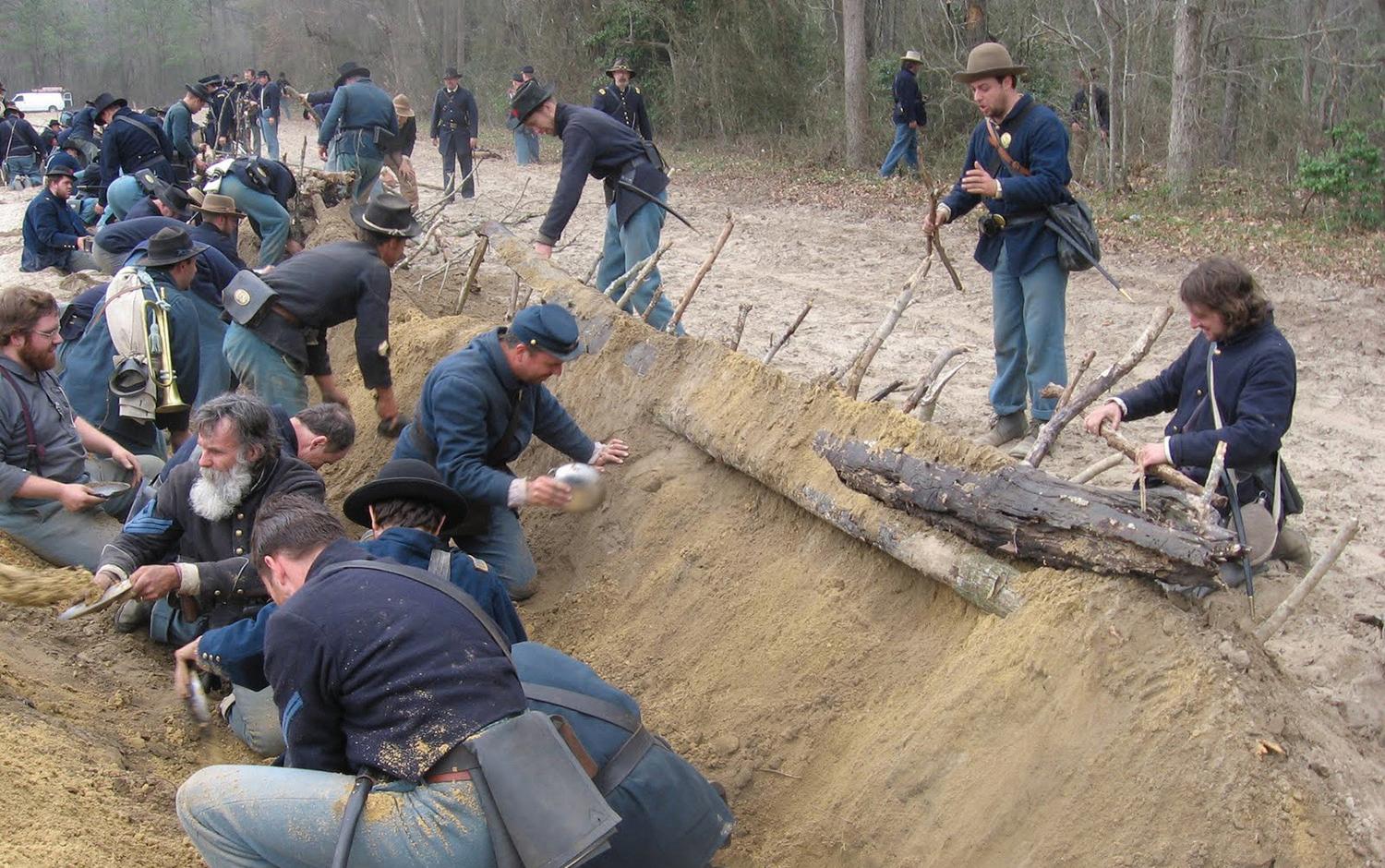
3 minute read
Taking a look back at the Battle of Bentonville
from March 2020
by Johnston Now
William Tecumseh Sherman was relaxed on March 19, 1865. His march through North Carolina was proceeding smoothly.
The Federal forces had encountered serious resistance only once, at Averasboro on March 15-16, since crossing the state’s southern border. This delaying action, Sherman believed, was all that the Confederates were willing to do. He knew from previous experience that their commander, Joseph E. Johnston, was averse to taking serious risks. The Northern general did not foresee that he would have to fight the last major battle of the Civil War in Johnston County.
Advertisement
General Johnston, however, was desperate. With the Confederacy on its last legs, he was ready to put his natural caution aside in order to stop Sherman. Johnston’s determination was bolstered by the knowledge that another Federal army under John M. Schofield was advancing up the Neuse to meet Sherman at Goldsboro. Time was running out.
That was why Johnston ordered all available Southern forces to converge on Smithfield preparatory to an all-out attack on the Northern host.
Sherman’s troops were split into two armies traveling eastward in parallel led by Henry W. Slocum to the north and Oliver O. Howard to the south. The Confederate commander’s plan was to destroy Slocum’s wing before Howard could intervene. It was Johnston’s chief of cavalry, Wade Hampton, the future Governor of South Carolina, who suggested the battlefield: a rural neighborhood in the heart of Bentonville Township.
Hampton began the fight on the morning of March 19. His troopers dismounted and started harassing the Federal column near the home of Willis Cole, one of whose slaves, Hinton, would become the grandfather of jazz musician Thelonious Monk. As expected, the Northerners pushed the Southern skirmishers back beyond the Cole plantation. They were walking into a trap.
The majority of Johnston’s “Army of the South” was on the field. The left flank was held by Robert F. Hoke’s division, 5,557 men under the overall command of General Braxton Bragg. On the Rebel right was Alexander Stewart’s 4,500-man Army of Tennessee.

Re-enactors participate in the Battle of Bentonville. This year’s re-enactment is scheduled for March 21-22.
In between Bragg and Stewart was a gaping hole meant to be filled by the two divisions of Lt. Gen. William J. Hardee and his 7,500 veterans of Averasboro. Unfortunately for the Confederates, Johnston’s map underestimated the distance between Bentonville and Hardee’s camp at Elevation. This meant that the Southern army was unable to launch an immediate attack on the Federals.
Hoke’s men fired on the “bluebellies” as soon as they neared the Cole house. The Yanks, battle-tested Midwesterners, responded by charging both flanks. By this time, Hardee and the time for the “graybacks” to strike had arrived. Stewart’s men pounced on their foes. They sent the Federal left reeling back, but the right held firm. The first day of battle ended with an uneasy standoff.
Gen. Sherman was not pleased that night when he heard that the Rebels had nearly overwhelmed half of his army. He promptly ordered Howard to move his wing to reinforce Slocum at Bentonville. Howard’s men joined their fellow Yankees the next day, March 20, bringing the number of Federal troops present on the field from around 20,000 to nearly 60,000, more than three times the size of the Rebel army.
Knowing that further attacks would be futile, Johnston pulled his men back into a defensive position in the hope that Sherman would make a hasty counterattack. The second day passed without incident.
However, on the third day, March 21, Joseph Mower, a division commander under Howard, launched a “reconnaissance” mission on his own initiative. This attack broke the Confederate left flank and advanced almost as far as the Mill Creek Bridge, Johnston’s only line of retreat. The Southerners only managed to halt Mower’s assault with a desperate counterattack led by Gen. Hardee in person.
Nevertheless, a further Federal offensive would have destroyed the fragile Rebel line, but Sherman ordered Mower to fall back. Johnston took advantage of his opponent’s lapse of judgment by withdrawing his army towards Smithfield the next day. The Battle of Bentonville was over.
This battle, the last major clash in a war that had already consumed hundreds of thousands of lives, resulted in over 4,100 casualties, several hundred of whom were dead or dying. One of them was Hardee’s teenage son, Willie, mortally wounded while charging the Yankee attackers on March 21.
One of those who sent condolences to Willie Hardee’s grieving father was the boy’s former tutor, Federal Maj. Gen. Oliver O. Howard. Despite being on the opposite side, Howard still felt the pain of his old friend.
Benjamin Sanderford, a resident of Clayton, studied social science at UNC Greensboro. He can be reached at benwsanderford@gmail.com.










